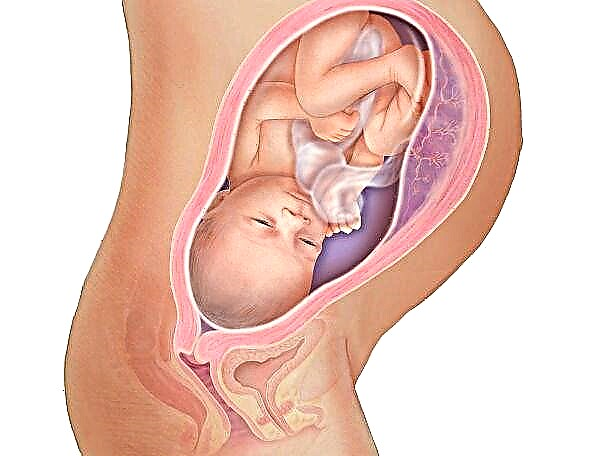
Bactroban is a topical antibacterial agent often prescribed by adults for purulent rhinitis and skin infections. But is it possible to treat children with such a drug and how to do it correctly?
Bactroban is produced in two versions:
- Ointment for external treatment. It is represented by a white homogeneous substance. This form is sold in a tube, which contains 5 or 15 g of the drug.
- Nasal ointment. This is also a homogeneous mass of white. It is sold in a 3 gram tube.


Composition
In both versions of Bactroban ointment, the active ingredient is mupirocin, presented at a concentration of 2%, but the auxiliary ingredients are different.
In the nasal ointment, a paraffin base is used, to which softizan 649 is added. Bactroban for external use includes two types of polyethylene glycol (macrogol 400 and 3350).
Operating principle
The main component of any form of Bactroban is an antibiotic obtained from bacteria of the type "fluorescent pseudomonas". Such a substance blocks protein synthesis in microbial cells, as a result of which they stop multiplying and die.
The drug is effective against:
- Staphylococcus aureus.
- Epidermal staphylococcus.
- Streptococci.
- Gonococcus.
- Haemophilus influenzae.
- Meningococcus.
- Pasteurell.
- Proteus.
- Enterobacter.
- Citrobacter.
- Pertussis stick.
Corynebacteria, anaerobic microorganisms, micrococci and enterobacteria are insensitive to the drug.

Indications
Nasal ointment is prescribed for bacterial rhinitis and nasopharyngitis, as well as for staphylococcus carriage. The reason for prescribing Bactroban dermatological ointment may be:
- Impetigo.
- Furuncles.
- Folliculitis.
- Bacterial complications of abrasions, insect bites and other skin injuries.
- Burns.
- Eczema.
This form is also prescribed for prophylactic purposes if there are minor abrasions, wounds or cuts, wishing to prevent their suppuration.

From what age is it allowed to take?
Instructions for the use of intranasal ointment for children contains information that the product can be safely used from the age of 12. However, the doctor may prescribe this medicine for younger children, if there is a reason for this. In this case, the dosage must be adjusted.
Contraindications
Bactroban should not be used if you are hypersensitive to this drug. Ointment for external treatment is also prohibited for use on mucous membranes. If the drug accidentally gets into the eyes, it should be washed off immediately with plenty of water.
Side effects
Ointment in the nose in isolated cases can provoke inflammation of the mucous membrane. Topically applied ointment sometimes causes burning or itching at the site of application. Also, after treatment, there may be a feeling of dryness and soreness.
Occasionally, topical application leads to an allergic skin reaction, which is often local, but rarely systemic. In addition, if the agent is used for too long, it can cause a decrease in the sensitivity of the pathogen and its active growth.
Instructions for use and dosage
Treatment with Bactroban is carried out twice a day, but sometimes the doctor may prescribe a three-time application. Nasal ointment in an amount of about the head of a match is lubricated with the inner surface of each nostril (use a cotton swab for application), after which the wings of the nose are squeezed to evenly distribute the drug. The dermatological form is applied to the affected skin, and on top, if necessary, an aesthetic bandage is applied.
It is not recommended to mix the ointment used in the nose with other agents, because this can affect the stability of the drug and reduce its antibacterial effect.
The duration of treatment with nasal ointment is 3-5 days, and the drug for external treatment can be used for up to 10 days. You should not use dermatological ointment longer than this period.
Overdose and interactions with other medications
There are no data on the excess of the Bactroban dose and the effect of this drug on treatment with other medicines.
Terms of sale
To purchase the drug Bactroban, you must have a prescription from your doctor. You can buy a nasal ointment for 500-600 rubles.
Storage conditions and shelf life
Tubes with Bactroban should be kept out of the reach of babies, and the optimal storage temperature is called a temperature below +25 degrees Celsius. From the moment of release, the nasal ointment should be used within 3 years, and the shelf life of Bactroban for external treatment is 2 years.


Reviews
There are many positive reviews about the use of Bakroban, in which they note that the remedy in the form of a nasal ointment helped with rhinitis or protected the child from respiratory infections during the epidemic season. Among the disadvantages of the drug are usually mentioned the small volume of the tube and its high cost.
Analogs
Instead of Bactroban, you can use another preparation containing mupirocin. It can be Bonderm or Supirocin ointment. Both of these medicines are for treating the skin.
If you need to replace the nasal ointment, your doctor may prescribe medications with a similar therapeutic effect:
- Pinosol. This herbal remedy for the common cold comes in the form of drops, nasal cream, and nasal ointment, given from 2 years of age. There is also a spray form that is used in children over 3 years old.
- Evamenol. Such an ointment containing levomenthol and eucalyptus oil can be prescribed for rhinitis in children over two years old.
- Aqua Maris. This seawater-based remedy helps to moisturize the mucous membranes and cope with a cold. It can be replaced by similar drugs Marimer, Fluimarin, Morenazal, Doctor Theiss allergol sea water, Salin, Physiomer and others.



